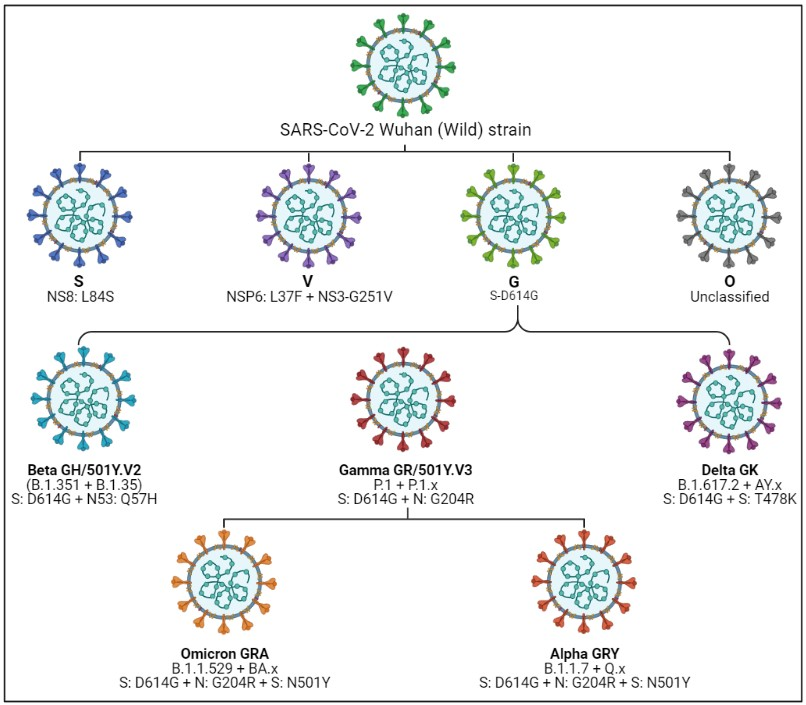Genomic evolution of the SARS-CoV-2 Variants of Concern
COVID-19 pandemic waves in India
DOI:
https://doi.org/10.17179/excli2023-6098Keywords:
COVID-19, SARS-CoV-2, Spike protein, Variant of Concern, IndiaAbstract
SARS-CoV-2 has mutated rapidly since its first case report in Wuhan, China, leading to the emergence of an indefinite number of variants. India has witnessed three waves of the COVID-19 pandemic. The country saw its first wave of SARS-CoV-2 illness from late January 2020 to February 2021. With a peak surge of cases in mid-September 2020, India recorded more than 11 million cases and a death toll of more than 0.165 million at this time. India faced a brutal second wave driven by the emergence of highly infectious SARS-CoV-2 variants B.1.617.2 (Delta variant) and the third wave with the leading cause of BA.2 (Omicron variant), which has led to an unprecedented rise in COVID-19 cases in the country. On September 14, 2022, India recorded a cumulative 44.51 million cases of COVID-19 with more than 0.528 million deaths. The discovery of common circulating mutants is facilitated by genome sequencing. The changes in the Spike surface glycoprotein recombinant binding domains served as the critical alterations, resulting in enhanced infectivity and transmissibility, with severe clinical effects. Further, the predominant mutation in the SARS-CoV-2 spike protein; the D614G strains served as a model for vaccine development. The mutation of the Wuhan strain to the Variant of Concern led to a significant increase in SARS-CoV-2 infections. In addition, there was a shift in the age group affected by SARS-CoV-2 variant infection. The current review summarized the COVID-19 pandemic's Variant of Concern and the advent of SARS-CoV-2 in India.

Downloads
Published
How to Cite
License
Copyright (c) 2023 Pooja Bhardwaj, Shailendra Kumar Mishra, Sthita Pragnya Behera, Kamran Zaman, Rajni Kant, Dr Rajeev Singh

This work is licensed under a Creative Commons Attribution 4.0 International License.
Authors who publish in this journal agree to the following terms:
- The authors keep the copyright and grant the journal the right of first publication under the terms of the Creative Commons Attribution license, CC BY 4.0. This licencse permits unrestricted use, distribution and reproduction in any medium, provided that the original work is properly cited.
- The use of general descriptive names, trade names, trademarks, and so forth in this publication, even if not specifically identified, does not imply that these names are not protected by the relevant laws and regulations.
- Because the advice and information in this journal are believed to be true and accurate at the time of publication, neither the authors, the editors, nor the publisher accept any legal responsibility for any errors or omissions presented in the publication. The publisher makes no guarantee, express or implied, with respect to the material contained herein.
- The authors can enter into additional contracts for the non-exclusive distribution of the journal's published version by citing the initial publication in this journal (e.g. publishing in an institutional repository or in a book).





